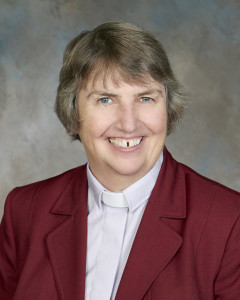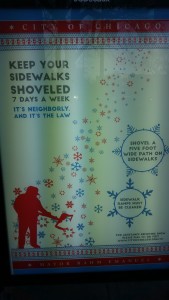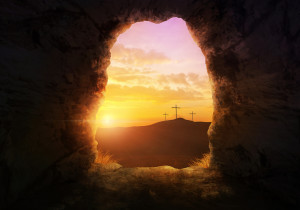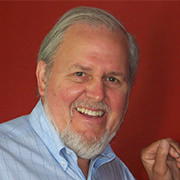By: Ali Brauner
Associate director, Cathedral in the Night
The reality of affordable housing in America today is far less positive than most of us would like to believe. Agencies are understaffed and case managers are overworked. Underfunded and overstretched, the programs designed to help people get back on their feet and achieve self-sufficiency have far too many gaps through which a person might fall, with virtually no built-in safety nets to catch those who do. There are mountains of paperwork, tedious, long hours in crowded waiting rooms filled with small children who can’t receive the attention they need from their stressed, anxious parents. I know this because I was there myself.
In truth, I cannot write from the point of view of the stressed parent, nor as the child fussing over the long hours sitting still under the florescent lights. I was there as an advocate, at once empowered and helpless. The mother of two young children sat next me to in the unflattering light of yet another waiting room, with its peeling paint and stained, warped floorboard. Stacy and I were the first to arrive at the Department of Transitional Assistance (DTA), but by noon the room was filled with people.
It is Stacy’s story that I want to share today, with her permission. Her name has been changed to protect her privacy, but all other details are true.
Stacy is strong and powerful, well spoken and incredibly well organized. While other mothers in the room barked at their toddlers to sit still, keep quiet and behave, tasks impossible for a person who is only 2, Stacy calmly responded to her child’s request for attention with patience and affection. She came prepared with snacks and distractions, books and crayons, coloring books and Legos. He stayed happily on the floor by her feet, indigo and violet swirls covering Mickey Mouse’s smiling face.
I accompanied Stacy to the DTA office because she was facing eviction. Her story is remarkable. A physical disability makes movement and travel hard on her body, leaving her in a fair amount of pain. Once homeless, she lived in a motel for a short time before being placed in an apartment with her young child. At the time, a state-funded program paid the portion of Stacy’s rent that she was unable to afford, allowing her to scrape by with her minimal income. Her disability has left her currently unable to work.
In addition to the physical pain, years of hardship and traumatic experiences have left emotional scars on Stacy’s spirit, which she is strong enough to acknowledge, but she doesn’t let them slow her down. She explained that the process of finding housing, getting swept off the street and into supportive programs required countless hours of paperwork. At an unstable time in her life, she is unclear what paperwork was signed, what information was given, who she even spoke with. The fog of trauma combined with the near impossible task of filling out the required paperwork for things like housing, health care, day care vouchers, food stamps, etc., leaves a person feeling exhausted, drained and even punished. It’s exhausting to be poor.
For a few years, the program in which Stacy was enrolled kept her safely housed, but over time, the budget for the program was slashed and a time-limit was placed on the assistance. Her housing voucher expired on Jan. 31. Without intervention, she would be homeless by the end of March.
I met Stacy at Cathedral in the Night, an outdoor church in Massachusetts. In December, she came to us, anticipating the end of her voucher and the chaos that would follow. When she asked us for help, she surprised us. Her hope was not so much for a resolution to her own housing crisis. What she really wanted was to help those like her, to tell her story to people in positions of power so that the system might be changed for the better. I continue to be impressed and inspired by Stacy’s spirit.
I was able to set up a meeting quite quickly between Stacy and U.S. Rep. Jim McGovern, her representative in Congress. In the weeks prior, we helped Stacy write out her story in detail, shaping it into a clear, powerful narrative of struggle and survival, one that moved the congressman during our meeting. Not surprisingly, Stacy spoke in a clear, calm voice as she told her story to him, advocating for herself in a way she had been unable to do before. Her young son sat on my lap as Stacy spoke, crayons strewn across the table, and McGovern seemed perfectly at peace in the chaos.
We expected him to respond like most politicians might, with promises to work harder to make the country better, but then he looked at his staffer, sitting behind him at the table, and said, “Now, who do we need to call?” We continue to be pleasantly surprised by his commitment to not just his community as a whole but to the individuals within it. A few days after our meeting, he had written Stacy a letter of support and had called the directors of several housing organizations trying to find a solution to her crisis.
On the day of the DTA meeting, I was able to give Stacy a ride to the office, sitting with her in her meetings and keeping her child occupied. By car, the journey takes 30 minutes. By bus, it would have taken more than two hours, each way. Being poor is a terrible waste of time. After a phone call from McGovern’s office, armed with a letter signed by him, we still waited more than two hours before being seen, only to be told there was nothing the agency could do.
In spite of this, Stacy told me on the way home that my presence in the room made her feel supported and visible. She said that she had never been treated so well by a housing agency. I was there only as an advocate, helping to keep tones of voices low, asking clarifying questions, and taking good notes. When the young child got antsy, I would walk with him in the halls, allowing Stacy to focus on the meeting.
Even though we didn’t walk away that day with a solution to her housing problem, it did feel like a win. For me, I felt like the reality of the housing world had hit me in the face and opened my eyes wide. For Stacy, she felt visible and seen, supported and cared for by her church.
Eventually, Stacy was able to find an organization to help her stay afloat until a Section 8 voucher becomes available for her. Having a place to live is so important for her and her two children.
Cathedral in the Night is proud to have walked with Stacy and her family through this difficult journey, never speaking for but simply keeping watch and bearing witness to the hardship of poverty and disability. We are so grateful to McGovern for all his work on behalf of this family and look forward to new ways that members of Cathedral in the Night will be involved in advocacy.








